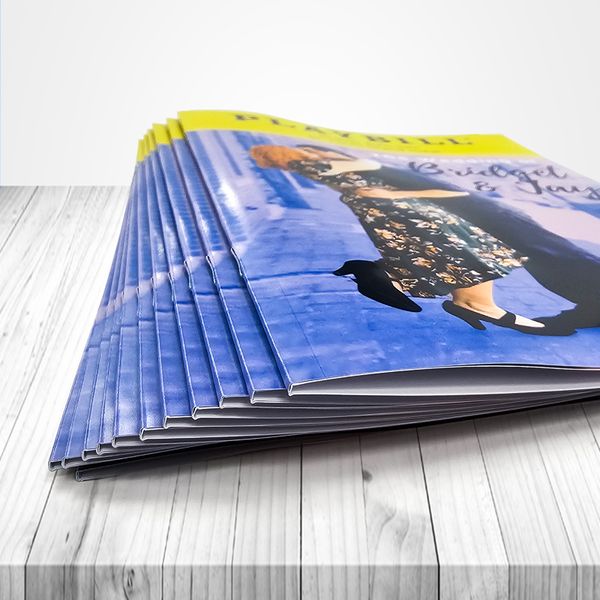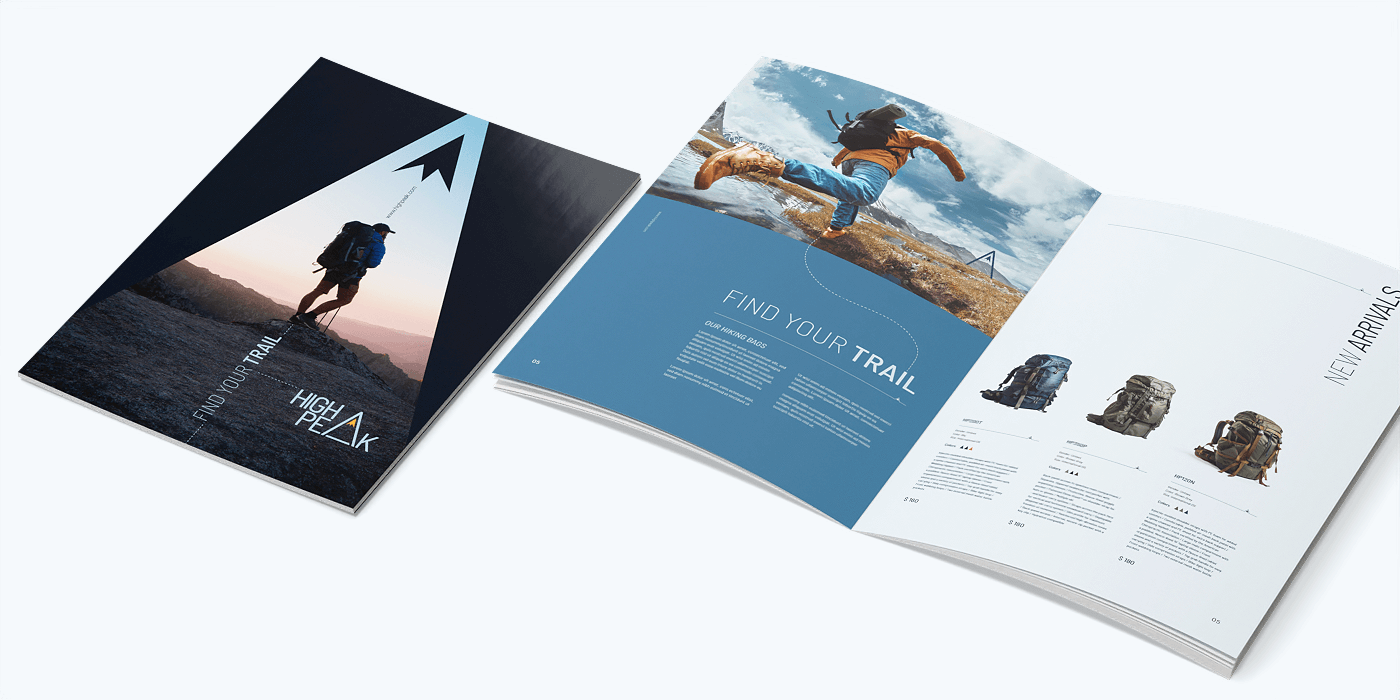10 Innovative Ways Booklet Printing Is Revolutionizing Promotional Campaigns
10 Innovative Ways Booklet Printing Is Revolutionizing Promotional Campaigns
Blog Article
The Vital Guide to Understanding Brochure Printing Options and Techniques
The process of booklet printing entails multiple considerations that can greatly impact the last item. From picking the suitable layout and dimension to understanding the subtleties of binding techniques, each selection plays a crucial duty. Additionally, elements such as paper supply and printing methods more influence the performance of the brochure. As one browses these alternatives, it becomes essential to understand how they interconnect and what that implies for the total end result.
Understanding Pamphlet Styles and Dimensions
When considering pamphlet printing, understanding the numerous formats and dimensions available is necessary for achieving the preferred presentation. Brochures can be generated in various layouts, including saddle-stitched, spiral-bound, and perfect-bound, each offering unique benefits. Common sizes vary from basic letter (8.5 x 11 inches) to smaller sized alternatives like A5 (5.8 x 8.3 inches), enabling adaptability based upon content and target audience.Selecting the proper size can affect both the design and viewers engagement. Larger sizes may match visually driven web content, while smaller sized layouts might be much more user-friendly and portable. Furthermore, the variety of web pages influences the selection of binding method, as thicker brochures may need tougher bindings. Ultimately, comprehending these aspects enables an extra tailored approach, guaranteeing that the end product straightens with the intended message and aesthetic, improving the general efficiency of the interaction.
Selecting the Right Paper Supply

Binding Techniques: Alternatives and Considerations
When it involves binding approaches for booklets, a number of choices are readily available, each with distinctive advantages. Saddle stitch binding offers an economical remedy for thinner pamphlets, while perfect binding techniques offer a more refined appearance for thicker magazines. Wire-O binding attracts attention for its resilience and simplicity of use, making it suitable for papers that call for adaptability.
Saddle Stitch Binding
Saddle stitch binding supplies a cost-effective and practical solution for assembling booklets, making it a popular selection amongst services and publishers. This binding technique involves folding sheets of paper in half and stapling them along the fold line, developing a organized and neat look. Commonly ideal for brochures with a lower page matter, saddle sewing is optimal for magazines, brochures, and educational products. The simpleness of this technique allows for fast manufacturing and is typically favored for brief runs or marketing items. However, it is essential to keep in mind that saddle stitch binding may not appropriate for thicker pamphlets, as the spinal column might not stand up under increased weight. Generally, it remains a reliable alternative for lots of printing projects.
Perfect Binding Strategies
Perfect binding is a widely made use of technique that gives a refined and specialist coating to brochures and magazines. This method includes gluing the web pages together at the back using a solid adhesive, permitting a clean side and the ability to hold a larger variety of pages compared to saddle sewing. Perfect binding is particularly appropriate for thicker pamphlets, such as brochures and yearly records, where a sturdy, flat back is desired. Furthermore, it supplies the option for a printed cover that can be created to boost visual charm. Nonetheless, considerations such as page count, paper weight, and the meant use the booklet ought to be taken into consideration, as they can influence resilience and general top quality.
Wire-O Binding Choices
Wire-O binding, recognized for its longevity and flexibility, offers an outstanding choice for brochures that need simple web page turning and an expert appearance. This binding technique employs a series of steel loops that hold pages securely, allowing them to exist level when open. It is specifically ideal for handbooks, presentations, and brochures due to its durable nature. Wire-O binding is readily available in different colors and diameters, suiting various page counts and densities. Furthermore, it permits the incorporation of tabs and covers, improving the booklet's total visual. Considerations for Wire-O binding include the selection of cable color, the dimension of the loops, and the extent of modification preferred, every one of which can exceptionally influence the end product's appearance and performance.
Digital vs. Offset Printing: Which Is Best for You?
When selecting a printing approach for brochures, understanding the distinctions between electronic and balance out printing is important. Digital printing utilizes contemporary technology to create premium prints quickly and cost effectively, making it optimal for brief runs or jobs requiring fast turn-around times. It enables personalization, providing the capacity to print on-demand with very little waste.In contrast, balance out printing is a traditional technique that masters creating huge quantities with constant top quality. It includes moving ink from a plate to a rubber blanket, then to the paper, which causes lively shades and precise information. Nonetheless, counter printing usually calls for longer setup times and is a lot more cost-efficient for larger volumes.Ultimately, the option between digital and counter printing depends on project demands, spending plan, and desired quantity. For small, time-sensitive projects, digital may be the very best selection, while countered might be preferable for larger, premium manufacturings.

Creating Your Pamphlet: Tips and Ideal Practices
When creating a brochure, careful attention to format, typeface choice, and color usage can substantially boost its efficiency. A well-structured layout overviews the visitor's eye, while suitable fonts assure readability and communicate the wanted tone. In addition, reliable use color can stimulate emotions and emphasize crucial information, making the general design more impactful.
Picking the Right Design
How can one properly select the right format for a brochure? Initially, it is necessary to examine the brochure's purpose and target market. A clean, organized layout enhances readability and interaction. Making use of a grid system can assist in aligning aspects constantly, creating an expert look. Additionally, integrating visual pecking order with differing sizes and placements of pictures and text can assist the visitor's eye and stress crucial information. It is likewise vital to leave adequate white room, which avoids congestion and enables much better focus. Ultimately, testing different layouts with mock-ups can offer insight into how the style carries out in real-world scenarios, ensuring that the end product meets both functional and visual needs.
Selecting Suitable Fonts
An appropriate typeface can greatly boost the overall design of a booklet, matching the design and reinforcing the material's message. The choice of typefaces ought to take into consideration readability, specifically for body text, as it assures the info is obtainable to all readers. Sans-serif typefaces are usually favored for digital formats, while serif fonts can provide a conventional feeling in printed products. find here It's a good idea to restrict font choices to two or three to preserve visual coherence. Furthermore, typeface dimension plays an important role; headings ought to be distinct but not overwhelming, while body text need to be comfy for reading. When selecting font styles, placement with the booklet's theme and target market is important for reliable interaction and aesthetic charm.
Efficient Usage of Shade
Color works as an effective device in booklet style, leading and shaping assumptions viewers emotions. It can stimulate sensations of excitement, depend on, or calmness, relying on the hues picked. Developers must think about shade concept concepts, guaranteeing that the selected scheme aligns with the brochure's message and target audience. Making use of cozy shades like red and orange can create urgency, while cooler tones like environment-friendly and blue foster tranquility.Additionally, comparison plays a vital function; corresponding shades can enhance readability and aesthetic allure. Uniformity in shade use throughout web pages better reinforces brand identification and cohesion. Ultimately, efficient color execution not just captures attention however likewise enhances the pamphlet's purpose, making it a vital element of successful image source style.
Ending Up Touches: Coatings and Unique Results
While many think about the material and design of a pamphlet the most important elements, the finishing touches, such as coverings and unique effects, play an important duty in boosting its overall appeal. Coatings can offer protection and sturdiness, making sure that the brochure stands up to damage. Matte coatings use an innovative, non-reflective surface area, while shiny finishings can make shades appear more captivating and lively. Special impacts, like embossing or aluminum foil marking, include a responsive dimension that can develop an unforgettable impression. These strategies can highlight particular locations, accentuating vital info or developing visual interest. Furthermore, UV covering can give a high-shine surface that boosts the general look.Together, these ending up discover this info here touches not only boost the booklet's visual but likewise connect professionalism and trust and attention to detail, inevitably leaving a long lasting influence on the reader.
Expense Factors To Consider for Booklet Printing
Recognizing the various expense factors to consider for booklet printing is vital for companies and businesses aiming to maximize their budgets. Key variables influencing expenses consist of the selection of binding, paper, and ink methods. Higher high quality products, such as exceptional paper or specialized inks, usually raise the overall expense. Furthermore, the dimension and web page matter of the pamphlet play a substantial role; larger booklets require more resources and time to produce.Another essential consideration is the printing method, whether electronic or balanced out, as each has its very own prices framework and viability for different quantities. Services must likewise consider style expenses, which can vary based on complexity and using professional services. Ultimately, delivery and handling costs can include to the total amount, specifically for big orders. By examining these aspects, organizations can make educated decisions that align with their economic capacities while attaining the preferred quality in their published products.
Often Asked Questions
What Are the Environmental Influences of Booklet Printing?
The environmental impacts of booklet printing consist of deforestation from paper manufacturing, carbon emissions from transportation, and waste generation from discarded materials - Booklet Printing. Sustainable methods, such as utilizing recycled paper and green inks, can minimize these results
How Can I Guarantee Shade Accuracy in My Brochure?
To assure shade precision in a booklet, one need to use adjusted displays, use specialist shade accounts, carry out test prints, and choose high-quality printing solutions that supply color matching and proofing alternatives for ideal results.
What Is the Regular Turnaround Time for Brochure Printing?
The regular turn-around time for booklet printing varies depending upon the intricacy and amount - Booklet Printing. Generally, it varies from a couple of days to 2 weeks, influenced by aspects such as printing approaches and ending up needs
Are There Minimum Order Quantities for Pamphlet Printing?

Can I Print Booklets in Several Languages?
Publishing pamphlets in numerous languages is feasible. Several printing services offer options for bilingual or multilingual layouts, permitting for efficient communication. Careful planning guarantees that develop elements accommodate different languages without endangering readability or aesthetic appeals. Furthermore, aspects such as paper supply and printing techniques further influence the performance of the booklet. When taking into consideration pamphlet printing, recognizing the different formats and sizes available is crucial for accomplishing the desired presentation. When picking a printing method for pamphlets, recognizing the differences in between digital and counter printing is important. Furthermore, the dimension and web page count of the booklet play a significant duty; bigger brochures require more resources and time to produce.Another essential consideration is the printing strategy, whether digital or offset, as each has its very own prices framework and viability for different amounts. The ecological impacts of pamphlet printing consist of deforestation from paper manufacturing, carbon exhausts from transportation, and waste generation from discarded products.
Report this page